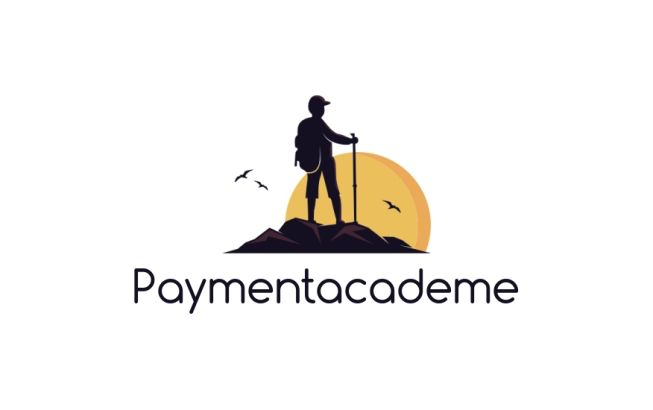
🚀 INTRODUCTION
The role of a product manager is being redefined — not by methodology shifts or org charts, but by something far deeper: AI-native product orchestration.
At the center of this disruption is Bolt.new, a browser-native AI IDE that lets you create, edit, run, and deploy full-stack applications using natural language prompts in seconds, without traditional engineering workflows.
This isn’t just about speed. It’s a fundamental rewrite of how product is imagined, validated, and scaled.
This deep-dive is not a product demo. It’s a forward-looking thesis for experienced product leaders: what Bolt.new enables today, how it collapses the traditional product stack, and what’s coming in the next 3–5 years that will change your team, your KPIs, and your value as a PM.
⚙️ SECTION 1: WHAT BOLT.NEW ENABLES TODAY
🧠 1. From Prompt to Full-Stack Prototype
Example Prompt:
“Build a mobile app with Supabase login, a job listing UI, PSP payment integration, and admin dashboard.”
In under 2 minutes, Bolt:
- Creates backend APIs in Node.js
- Generates React frontend (or Next.js)
- Hooks to Supabase for auth
- Integrates payment logic with PSP GateWay
- Boots a local instance via WebContainers (in-browser Linux kernel)
- Lets you live-edit and deploy to Netlify
This was previously a 3-team, 3-week job.
Today, a solo PM with a prompt can test the same hypothesis in an afternoon.
⚒️ 2. Technical Stack Abstracted, but Not Dumbed Down
Unlike other LLM-based builders (e.g., Vercel v0, Replit Agents), Bolt gives:
- Full file-system access
- Real terminal
- Live logs
- Dependency management (npm, Yarn)
Which means:
- It’s not just for no-coders — it’s a developer-grade builder with AI front-end
- PMs can explore API architecture, latency, and deploy hooks, not just frontend mocks
🔁 3. Iterative Collaboration with AI
Bolt’s conversation flow is not static. You can:
- Ask it to fix bugs
- Refactor modules
- Explain what’s wrong in TypeScript
- Add UI elements with design semantics (e.g., “Add a modal with Tailwind CSS for payment failure”)
You’re not writing tickets. You’re pair-building with an AI engineer that ships.
🧪 4. Real-Time Testing, No Sprints Needed
Want to validate a user flow with 10 customers?
- Prompt → App Generated → Shareable Link
- Ask users to try real flows, not figma mockups
- Capture data, re-prompt, deploy
Bolt makes hypothesis loops compress from 3 weeks to 3 hours.
🔮 SECTION 2: HOW PRODUCT MANAGEMENT IS BEING REWIRED
🧩 1. Product Is Now a Live System, Not a Sequence
In legacy models, product was a sequence:
- Research → Design → Build → QA → Launch → Measure
In Bolt’s model:
- Everything is coexistent
- Design, build, test, and launch are infinite loops controlled via prompts
Your backlog becomes a living prompt tree, and your roadmap becomes a set of behavioral hypotheses.
📈 2. KPIs Will Shift From Tickets to Tokens
Product performance will no longer be measured by features shipped, but by:
- Prompt effectiveness
- Token cost per validated outcome
- User Time-To-Value (TTV)
- AI-generated code quality and latency
Example metric:
“Churn recovery flow prompt cost: 2,600 tokens → 18% retention lift → $4.1k recovered revenue”
🛠 3. Tools Will Be Replaced by AI-Native Layers
| Current Tool | Future Stack |
|---|---|
| Figma | Prompt-based UI Composer (semantic + behavior-aware) |
| Jira | Prompt flow tracker with versioned branches |
| Mixpanel | Token-to-behavior insight engine |
| AB Testing | Autonomous variant generation with live kill-switch |
The PM will orchestrate systems, not coordinate teams.
⚡ SECTION 3: WHAT’S NEXT (2026–2030) – THE VISION
🔁 1. Continuous A/B Testing Without Setup
You won’t need growth engineers to configure variants.
You’ll say:
“Test login with Apple vs FaceID onboarding; kill the one that has >15% dropoff.”
AI will:
- Generate both flows
- Auto-route live traffic
- Auto-kill underperformers
- Refactor and re-test on new segments
PMs manage behavioral policies, not branches.
📦 2. No More MVPs. Everything is MLP (Minimum Lovable Prompt)
Because AI can iterate instantly, you don’t need MVPs to ship v0. You build:
- Real flows
- Real deployments
- Real analytics
…and optimize in place.
Every user interaction becomes a training data point for the next product version.
🔒 3. Governance Layers: The Real Challenge
Autonomous systems need:
- Prompt approval workflows
- Token consumption audits
- Hallucination testing
- LLM behavior safelocks
PMs will act as AI Quality Controllers, ensuring:
- Bias mitigation
- Cost-performance tradeoffs
- Fallback orchestration (e.g., when LLM fails mid-prompt)
💼 SECTION 4: THE NEW ROLE OF THE PM
🔧 You’ll need to master:
- Prompt decomposition
- Token behavior monitoring
- Real-time user modeling
- LLM stack fluency (context windows, embeddings, inference costs)
🚫 You’ll move away from:
- Backlog grooming
- Spec writing
- Sprint planning
- UX handoffs
Your team becomes:
- 1 PM
- 1 Prompt Architect
- 1 AI QA Specialist
- 1 LLM Engineer
🏦 SECTION 5: FINTECH & PAYMENTS USE CASES (TIED TO YOUR DOMAIN)
🏧 1. Real-Time KYC Prototype Generator
Prompt: “Create onboarding with MyInfo (SG), selfie upload, MAS compliance rules, auto-email alerts.”
Bolt builds:
- UI + backend flow
- Compliance triggers
- Mailgun integration
Share it with regulators for sandbox testing instantly.
💰 2. Stablecoin Remittance Workflow Validator
Prompt: “Create a remittance app with USDT payout, QR code scan, and FX visualization.”
You get a working mobile UX. Test with agents. Iterate before you raise capital.
🎯 CONCLUSION: PRODUCT IS NO LONGER A FUNCTION. IT’S A SYSTEM.
Bolt.new isn’t just a tool. It’s a preview of how software will be built, validated, and evolved.
Product Managers who want to stay relevant must:
- Think in prompt architectures, not workflows
- Trade tickets for tokens
- Replace outputs with outcomes
- Focus on user-behavior orchestration
The next 5 years belong to those who can design product systems that learn.

Leave a Reply